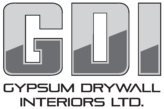Workplace incidents (used to be called accidents) need to be reported immediately. This is actually written into law and is an important part of the safety system. It lets us learn from errors and from this we build and work more safely. In the end, it helps keeps you safe on the jobsite and is necessary when you need to claim compensation. Reporting should not be looked at as a bad thing where the worker will be disciplined as a result. We (including the injured worker) need the reports and the Safety Manager will help you complete it if you don’t understand what the report is asking for.
This is GDI Rule #1, taken straight from the orientation notes:
- Accidents, injuries or “near misses”, regardless of their nature, shall be promptly reported to supervisors and an Incident Investigation Report is to be completed and returned to the office immediately.
If getting to the office isn’t really practical, then take a photo of the form with your phone and email or text it to your supervisor or foreman
Also, from the orientation, the following get reported to the GDI Site Foreman and GDI Site Safety Rep, who will get hold of GDI Safety Manager/Coordinator
- MSI’s (i.e. muscle strains and joint pain)
- Injury requiring First Aid (includes getting bandages from the First Aid Kit)
- Incident resulting in property damage
- Near miss
- Occupational illness or environmental damage
- Injury requiring medical aid from a health care professional
- Fire or explosionWorkplace Safety and Health gets notified and will come out to investigate the following:
- A death, or serious injury: Fracture of a major bone, Amputation, Loss of sight, Internal hemorrhage, Third degree burns, Unconsciousness resulting from concussion, electrical contact, asphyxiation, Poisoning, Cuts requiring hospitalization (overnight stay) or time off work, Any injury resulting in paralysis, Any other injury likely to endanger life or cause disability.
- A collapse or structural failure of a building, tower, crane, hoist, temporary construction support system or excavation (this includes scaffolding).
- Explosion, fire or flood
If there is a delay in reporting it will delay any compensation coming to the injured worker and make it difficult to establish the claim. There have been incidents that have resulted in an injury but because they were not reported in a timely manner, the claims were denied. The injured workers are without benefits. This has happened. Report the incident and complete the paper work promptly. Or better yet, work in a way that doesn’t get you injured so you don’t have to complete reports!
Spotting the Hazard and Reporting
A Pre-Job Hazard Assessment is critical to getting your tasks started safely. Often, I will a remark that everything is safe at a house. It feels safe to the worker because they get used to the hazards around them and they get filtered out, but they are still there.
Typically overlooked hazards are:
- air quality
- weights of our materials
- noise
- other trades
- floor and entry conditions
- scaffolds and working at heights
- And repetitive movements and overhead work
Don’t feel that you are being a wuss if you start identifying hazards on your form. Sometimes I think workers feel that they are being weak and scared when they identify a hazard and need a hand in controlling it. Reporting it means that you have put some thought into it and are willing to work around it or eliminate it outright. There is no need to keep working in an unsafe situation, because ultimately you or someone else is going to get hurt.
Pre Job Hazard Assessments are requirement for COR: we need the paper anyway.
There will always be a hazard linked to MSI (musculoskeletal injury-AKA sprains and strains). This should always be identified because we are always lifting something or doing overhead work. The control is: lift properly, get assistance or if you can, lighten the load. We recently had a long-term back injury because the worker didn’t look at how heavy a cart of material was before he tried to lift it: the back failed miserably.
For tapers, dust is a big one as well. It is a hazard, and its control is ventilation and a respirator. If your taping this should always be entered on the form.
And yes, people actually do read these things, especially if they get sent in the same day or pushed through because a significant hazard has been presented, like no guardrails at stairways or poor access to a house. These two will definitely cause problems for us and need to be dealt with right away.
If you don’t have a hazard assessment form, you can get one from your foreman, then complete and send it in so that we all know you are in a safer workplace.
